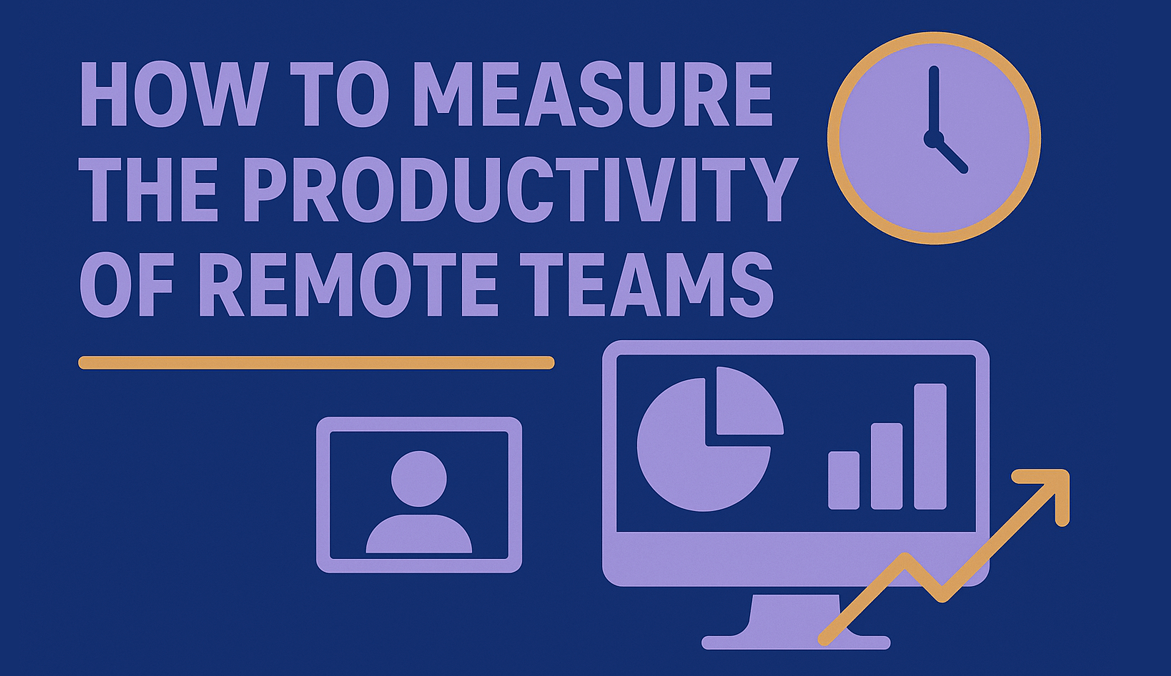Introduction
The shift to the remote work model is no longer just an experiment. Studies indicate that 83% of global employees prefer a remote or hybrid work culture over a traditional office schedule.
Remote work culture has become a permanent fixture in the modern business landscape. It has unlocked numerous benefits, including increased employee satisfaction and easy access to a vast talent pool. However, it has created a complex and persistent challenge for employers, i.e., how to measure a remote team’s productivity?
Measuring your team’s productivity remotely isn’t about tracking web browsing or keystrokes. It is also about optimizing workflows, understanding outcomes, motivating remote employees to perform at their best, and developing a culture of trust. By accurately measuring productivity, you can empower employees, detect bottlenecks, and align your team around a common goal.
Today, in this guide, we have outlined the vital metrics to consider for measuring your remote team’s productivity. With that, you will also get to know how using modern tools can help you deploy an effective and fair system that fuels collaboration and nurtures growth.
Why Should Organizations Measure Remote Teams Productivity?
- Aligns Individual Work With Organizational Goals
It is easy for a remote team to feel disconnected from the company. By effectively measuring important metrics that are connected to business objectives, employers can set a clear view between employees’ tasks and the organization’s success. This will also help in reducing scope creep, and everyone will understand their priorities. - Identifies Process Gaps and Bottlenecks
Tracking metrics helps identify workflow bottlenecks, whether it is under-resourced tasks, poorly integrated systems, or delayed approval. With accurate data, you will be able to streamline processes and refine handoffs. - Ensures Fairness and Recognizes Well-Performers
A clear set of productive metrics ensures that all employees are evaluated based on the same criteria, offering you an equitable environment. This way, you can accurately detect and reward your top performers, considering employees’ output and contribution. - Supports Data-Driven Decisions
You can’t always make decisions based on your gut feelings or anecdotes. It is important to consider quantitative insights. By measuring the productivity of your remote employees, you will get important insights into time allocation, task completion, and work quality. Based on this, you can make informed decisions about technology investment, training needs, and more. - Boosts Accountability and Engagement
Transparent productivity metrics and results trigger ownership. When a team sees how their contributions support the goals, they will feel more motivated, connected, and accountable to the company’s mission.
Important Metrics To Consider For Effective Productivity Analysis
A successful productivity measurement approach uses a balanced combination of various metrics. Depending on just a single element can be misleading. Here we have come up with some crucial metrics to consider for getting a clear and accurate picture of remote team performance.
- Time Tracking
Time tracking is the process of analyzing working hours spent on certain tasks, clients, or projects. While managing a remote team, understanding where every hour spent is important for accurate resource planning, client invoicing, and project costing.
Best Practice: Use modern time tracking systems that can automate tracking. Choose a tool that offers clear and detailed visual reports, categorizing time by individual, client, or project. Here, your objective should be to make time tracking a seamless process without increasing administrative burden. - Project/Task Completion Rate
This particular metric measures the total number of projects or tasks a team or individual completes successfully within a certain timeframe. If the completion rate is increasing and stable, it suggests the team is setting up for better performance and success. For remote employees, it is a vital indicator of effectiveness and success.
Best Practice: Take the help of project management tools, where multiple tasks can be assigned easily, tracked, and also mark it as complete. You can then calculate the ratio of finished projects to get a clear understanding of the productivity. - Work Quality
By analyzing work quality, you get a clear picture of the accuracy, caliber, and effectiveness of the project against the predefined standards. In a remote setting, the quality of work helps analyze employees’ commitment and skill. Quality work reduces the chances of revisions and increases client trust.
Best Practice: Always establish a clear checklist mentioning what constitutes quality work. To measure quality, use metrics such as Net Promoter Score, Customer Satisfaction scores, revisions required, and client feedback. Besides, you can create a culture of constructive feedback in the workplace. - Contribution to Total Revenue
This important metric connects a team’s or an employee’s activities to the bottom line of the company. In general, it applies to marketing, business development, or sales roles. It involves analyzing how certain campaigns, projects, or tasks influence sales conversions, revenue, and lead generation.
Best Practice: Use analytics software and CRM to track revenue generated through specific activities. Always focus on establishing clean and accurate attribution models. - Error Rate
By measuring the error rate of a remote employee, you get insight into the frequency of mistakes made by the employee in their work over a certain period. This could be rework loops, tracking bugs, or the number of inaccurate orders. It is a quantifiable measure of attention to detail and accuracy.
Best Practice: Use a systematic quality assurance process. For instance, use bug tracking programs for code. To check content, track the total number of corrections. For data processing, you can use a tool that supports automated validation. If an increase in revisions related to a new tool, you should invest in more training instead of penalizing employees. - Response Times
Remote collaboration greatly depends on effective communication. Measure the time employees take to respond to internal as well as external communications, such as messages, emails, or customer queries. Even though it is challenging to ensure instant replies, there should be a consistent and reasonable standard for addressing all inquiries. Long delays can lead to frustration and low service levels.
Best Practice: Deploy communication platforms or helpdesks that come with built-in analytics, which automatically track response time. Set a clear policy regarding response time. Use status flags or alerts to ensure important queries are addressed first. - Commitment to Deadlines
This metric measures the frequency with which remote employees or teams complete tasks on time. It also helps you measure time management, reliability, and accuracy of resource allocation. By analysing this, employers can recalibrate planning and optimize the sprint estimation process.
Best Practice: The most effective way to measure commitment is by utilizing a project management tool that assigns clear deadlines and owners to all tasks. These tools can offer detailed reports on task completion rates for teams and individuals. Furthermore, they also help you identify time management and workload issues.
How Mera Monitor Helps You Track Remote Productivity
Deploying a tool that can track all these metrics can be a challenging task. However, modern tools such as Mera Monitor can simplify the entire process. It offers an integrated platform where managers or employers can find objective data on their remote team’s productivity accurately. This advanced employee monitoring software is designed for both in-house and remote teams.
Mera Monitor’s automated time tracking empowers you to know where your employees are spending their work time. Besides, the easy-to-use dashboards help you monitor projects’ progress easily against deadlines. To help you measure contribution to revenue, this tool provides comprehensive reports where you can see how much effort and time are being allocated to certain clients, projects, or tasks. It will give you the data required to calculate ROI. Some useful features of Mera Monitor that can help you measure the productivity of your remote teams are:
- Automated Time Tracking
- Detailed Application and Website Usage Tracking
- Screen Monitoring with automated screenshots at timely intervals
- Comprehensive Reports and Analytics
- Intuitive Dashboard
- Time Claim feature
By combining flexible reporting with automated data collection, Mera Monitor grants you the focus on creating strategies instead of dealing with tedious timesheets. Deploy it and you can uncover crucial insights. Refine your remote team management and increase accountability.
Closing Thoughts
Measuring a remote team’s productivity is not a one-size-fits-all approach. It requires a balanced combination of quantitative metrics mentioned above. Besides, the approach you choose should respect autonomy, reinforce trust, and reward outcomes instead of micromanaging inputs. Focus on creating a system based on shared commitment, transparency, and trust. And don’t forget to leverage modern technology applications such as Mera Monitor to automate multiple repetitive tasks, identify unproductivity patterns, and centralize reporting. Use accurate data, and you can create and maintain a high-performing remote team that will drive your organization forward.
 Gift Card ₹999
Gift Card ₹999

